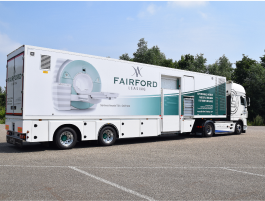It’s hard to imagine the modern healthcare landscape without medical imaging. Whether to diagnose neurological conditions, catch fatal diseases at an early stage, assess damage following an injury or provide those all-important check-ups during pregnancy, medical imaging plays a critical role in patient care – so much so, in fact, that 3.42 million medical imaging scans took place in 2017 alone.
For those unfamiliar with the differences between each modality and the purpose they serve in diagnosis and treatment, here’s a quick recap:
X-RAY
On November 8th, 1895, Wilhelm Conrad Roentgen of Wuerzberg University discovered a scientific breakthrough that changed the world forever. Whilst experimenting with Lenard tubes and Crookes tubes, Roentgen stumbled across this happy little accident purely by chance. Roentgen discovered that “X” radiation could pass through paper, phosphorescent materials, and later go on to find it could even pass through human skin tissue and metal.
One of the very first X-Ray films produced was of Wilhelm’s wife, Berta Roentgen’s hand. Since that scan of Berta’s hand, the X-Ray machine is now common place in all respectable medical institutions globally. X-rays are used in many different scenarios including dental, oncological, orthopaedic and regularly plays a pivotal role in trauma centres.
MRI
Magnetic Resonance Imaging has saved countless lives since its inception. Today, there are more than 20,000 MRI scanners installed around the world performing around 50 million examinations every year.
From torn ligaments to serious tumours and degenerative such as Alzheimer’s, the MRI aids radiographers in diagnoses by utilising very powerful magnets to create a strong magnetic field that forces protons within the body of the patient to align with the magnetic field to create a medial image. This form of modality is can be used in a plethora of ways to create detailed imagery of the brain, spinal cord, ligaments and many more.
CT SCAN
Computed Tomography (CT) was invented in 1972 by a British engineer by the name of Godfrey Hounsfield. Hounsfield paired his logical and methodological approach to research with South-African born physicist, Allan Cormack and together the pair made genius history.
The CT or CAT scan works by building upon the approach of Roentgen’s X-Ray machine but by adding a more sophisticated element to the procedure. Rather than remaining stationary, a CT scan will move in an arc, creating a more detailed and 3-dimensional image for a team of physicians to examine. CT scans are exceptional at obtaining imagery of soft tissue damage, lungs & brain abnormalities, as well as any issues facing the abdomen or bone structure.
ULTRASOUND
The world without the invention of the ultrasound would be a very different place. This technology has saved an immeasurable amount of lives, and enriched millions of others. Invented by Obstetrician Ian Donald and his engineering partner, Tom Brown, the Ultrasound machine is now common place in hospitals and laboratories across the globe.
The Ultrasound machine works by bouncing sound waves against an object to create an image of what lays underneath human tissue. Most commonly used in midwifery wards to check on the health and sex of a child, ultrasound is also employed to diagnose for many internal abnormalities as well as healing soft tissue injuries.











